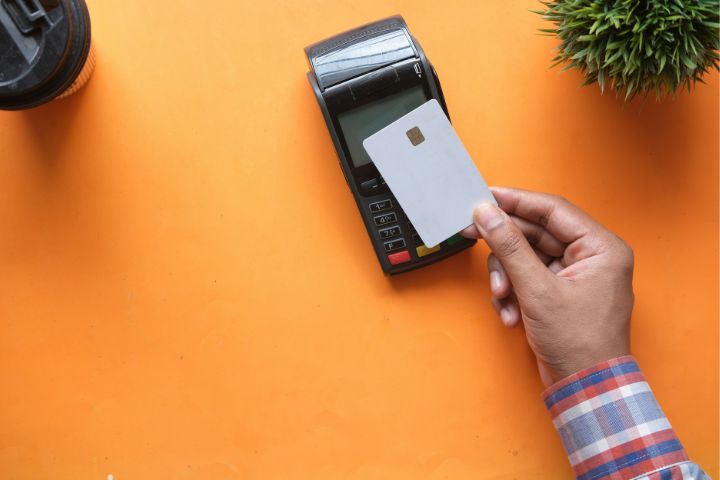Digital transactions aren’t just convenient anymore–they’re essential. Whether you run a startup selling software subscriptions or a global enterprise managing cross-border supplier payments, money now moves through an invisible web of APIs, processors, and digital ledgers.
And yet, that same web is constantly being tested. Cybercriminals are no longer lone opportunists–they’re organized, well-resourced, and disturbingly patient. A single breach can expose customer data, dent your brand’s reputation, and shake stakeholder trust overnight.
That’s why payment security has evolved from a “tech issue” into a strategic business pillar. The question isn’t just how to stop fraud; it’s how to design systems that build trust, improve speed, and still comply with tightening regulations.
Below are five key shifts shaping the next generation of secure online transactions–and how businesses can adapt before they’re forced to.
Table of Contents
1. Blockchain: From Buzzword to Backbone
For years, “blockchain” was the shiny new term that got thrown into every conference talk. Today, it’s finally finding its footing in practical enterprise use cases.
At its core, blockchain’s appeal lies in its immutability. Every entry written to a blockchain ledger is time-stamped, verified, and locked in by consensus. Once confirmed, it can’t be tampered with. For industries like logistics, healthcare, and finance–where auditability and data integrity are critical–that’s a game-changer.
Some payment processors now use blockchain to validate cross-border transactions instantly, cutting out intermediaries that once slowed everything down and took hefty fees in the process. Beyond finance, companies are experimenting with blockchain to track product provenance or manage digital identities.
The shift is subtle but profound: blockchain isn’t replacing banks or payment networks–it’s reinforcing them with layers of trust that can’t be erased.
2. Biometrics: Passwords Are Out, People Are In
The password era is ending–and honestly, it’s overdue. Businesses still relying on simple logins are inviting unnecessary risk.
Biometric authentication–fingerprints, facial recognition, even behavioral cues like typing rhythm–has entered the mainstream, not just for consumers but for enterprise systems. It’s faster, less error-prone, and infinitely harder to fake.
Think of a finance team approving multi-million-dollar transactions from mobile devices. Biometric sign-offs eliminate shared passwords and make it clear who authorized each movement of funds. Combined with contextual signals (location, device trust scores, time of access), biometrics dramatically shrink the attack surface.
It’s not perfect–biometric data must be stored securely and used ethically–but it’s a huge step toward frictionless, human-centered security.
3. Artificial Intelligence: Fraud Detection That Never Sleeps
AI has quietly become the unsung hero of payment security. Modern fraud prevention tools, like those developed by Paysafe, now analyze transactions in milliseconds, comparing them to billions of data points. They learn what “normal” looks like for each customer and flag deviations before money even leaves the account.
Imagine your system spotting a suspicious transfer at 3 AM from a new device in another country–and halting it automatically. That’s AI in action.
But AI does more than block threats. It helps businesses balance security and user experience by reducing false positives. In the past, legitimate transactions often got flagged, frustrating customers. Machine learning models trained on historical data now understand context better than ever, minimizing unnecessary declines.
For companies processing thousands of payments per second, that efficiency directly translates to higher revenue retention and stronger customer trust.
4. Encryption Enters the Quantum Era
Every business depends on encryption–even if you’ve never thought about it. The padlock icon in your browser? The secure connection between your cloud server and payment gateway? That’s encryption at work, scrambling data into unreadable code for anyone without the right keys.
But computing power is growing fast, and traditional encryption could one day be vulnerable to quantum computers capable of cracking today’s algorithms in seconds. That’s why forward-thinking businesses are already exploring quantum-resistant encryption.
The emerging field of quantum cryptography–especially Quantum Key Distribution (QKD)–ensures that if someone tries to intercept or observe encrypted communication, the system itself notices and invalidates the key. It’s not mainstream yet, but it’s coming.
Businesses dealing with long-term sensitive data–banking, insurance, or healthcare–should start reviewing their cryptographic roadmaps now. The companies that prepare early won’t just meet compliance requirements; they’ll define the new standard for trust.
5. Securing the Internet of Payments (IoT Edition)
The Internet of Things has turned nearly every device into a potential payment tool. Cars can pay for parking. Smart fridges can reorder groceries. Even industrial sensors in factories are being linked to billing systems.
That convenience brings a new challenge: security at the edge. Each connected device is a possible doorway for hackers. Most were never built with enterprise-grade encryption or identity management in mind, which means businesses need to retrofit protections. End-to-end encryption, regular firmware updates, and device-level authentication are no longer optional–they’re foundational.
Forward-looking companies treat IoT endpoints as full participants in their payment ecosystems, subject to the same scrutiny as any banking server. That mindset shift is key to preventing small vulnerabilities from becoming major incidents.
What It All Means for Businesses
Payment security isn’t static; it’s a living system that evolves as quickly as the threats targeting it. The best organizations recognize this and build layered defenses–technology, training, and policy–that adapt in real time.
The winners in this new era will be the companies that view security as an enabler, not a roadblock. When customers trust your payment process, they buy more. When partners know your data is safe, they collaborate freely. And when regulators see your compliance posture, they approve faster.
No single tool guarantees safety, but together they build something much more powerful: confidence. And in digital business, confidence is currency.
